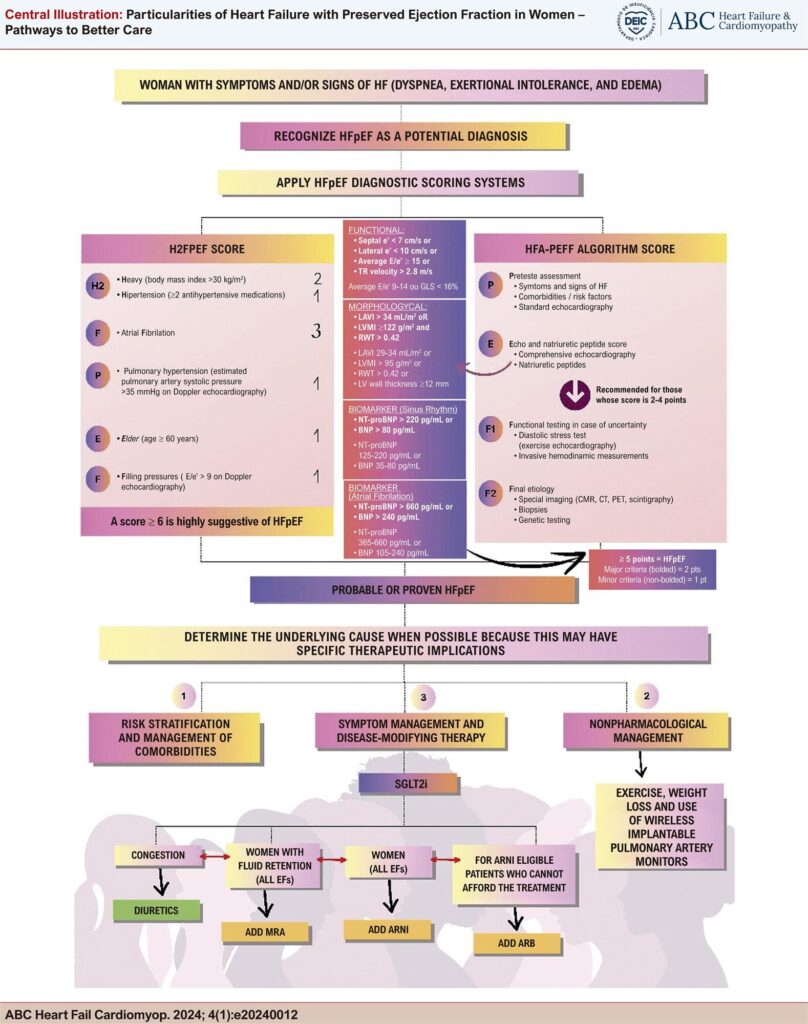ABC Heart Fail Cardiomyop 2024; 4(1): e20240012
Particularities of Heart Failure with Preserved Ejection Fraction in Women – Pathways to Better Care
Abstract
While heart failure with reduced ejection fraction (HFrEF) is more prevalent in males, female predominance is a striking feature in heart failure with preserved ejection fraction (HFpEF).
The incidence of HFpEF has been gaining alarming proportions. It has exceeded HFrEF as the primary form of heart failure, especially in the female sex. Women tend to have smaller cardiac chambers with higher left ventricular ejection fraction; however, they have more severe symptoms and signs. Until now, there is no consensus about the exact mechanisms of these differences related to sex. Understanding these mechanisms is essential to mitigate the risks for HFpEF and direct efforts towards identifying novel preventive and disease-modifying treatments. Lifestyle, pharmacologic, and device-based approaches to reduce the medical and societal impact of HFpEF could improve patients’ quality of life.
The purpose of this review is to outline known biological sex differences in women with HFpEF with a specific focus on pathways to better care for the diagnosis and treatment of women with HFpEF.
Keywords: Diagnosis; Heart Failure; Left Ventricular Function; Therapeutics; Women
821


